Home Garden Bug Solution
Here it is the beginning of June and bugs are making their appearances in our garden. We wanted to share a recipe we’ve found that has been recommended to us by other gardeners and has proven to be effective in dealing with unwanted insects and other bugs in the garden.
This is a different approach than our Squash bug solution. You can read that article here – Squash Bugs and Ways to Deal with Them. That approach works well for more than just Squash bugs, so give this recipe and that one a try to see what works for your garden! You might also like some of our solutions detailed in Heirloom Tomato Growing Tips that shows several methods of deflecting insects, nematodes and blight, mildew and other assorted fungi that love our tomatoes.
It needs to be mentioned that spending time in your garden and getting to know who lives there is extremely valuable, as then you’ll know when some shady character moves in. You might still be taken by surprise when you discover a colony of insects chomping on your squash, tomatillo or tomato plants; but you’ll know with certainty that they weren’t there last night or the morning before. This knowledge is valuable, as this helps in choosing which methods to use and how aggressive to apply them.
Here is another recipe for a broad-based insect repellent for your garden. This is a very concentrated recipe, as the garlic and onion oils are extracted into the mineral oil, so test spray a small area before soaking the whole garden. The extraction is based on English research used to test the effectiveness of garlic and onion oils as natural antibiotics and anti-fungal agents.
Start by testing it on a small area at a 20:1 dilution – 20 parts water to 1 part bug solution. You can always dilute it with more water if you find it is too aggressive for your plants. If it is effective, increase the dilution ratio 10:1 at a time until the solution is still effective, but not immediate. You don’t want to nuclear carpet bomb the problem, just kill off the bad bugs. Remember, this kills all bugs, not just the bad ones, so go easy and be careful! Garlic oil is very effective, but if used in large doses it will be deadly to bugs and soil micro-organisms as well. It must be said that homegrown or locally and organically grown garlic and onions are the best, as they will have much stronger oils than commodity ones from the grocery store.
- 3 heads not cloves, of garlic - crushed
- 2 medium onions finely chopped
- 1/4 cup mineral oil
- 2 Tsp pure liquid dish soap - Dr. Bronner's is best - it is organic do not use any detergent - it lasts too long and upsets the biological balance of the soil organisms.
- 1 cup apple cider vinegar
- 1 Tsp extra hot pepper sauce Dave's Insanity Sauce is great!
- Add crushed garlic and chopped onion to 1/4 cup mineral oil and let soak for 24 hours.
- Dissolve liquid dish soap into 1 pint of warm water, stirring well.
- Slowly soap-dissolved water to mineral oil, stirring well.
- Strain out solids through fine gauze or cheesecloth, then store in glass container - do not use a metal one as the extract will react with it!
- Add Garlic/Onion extract to apple cider vinegar and hot sauce.
- Stir well, making sure not to get any on your hands - it will burn!
- Use a 20:1 dilution ratio as a starting point - 20 parts water to 1 part bug solution. If bugs die rapidly, increase dilution to 30:1 or 40:1 until bugs don't die off as rapidly, then go back one dilution.
It is best to make this fresh as needed, as the oils will work best on the bugs when they are at their peak. Another approach is to use garlic essential oil that has been distilled and is many times more potent than the home-grown extract. If using the essential oil, start with 5 - 10 drops of oil in place of the extract. Look for garlic essential oil in your local health foods store or apothecary.

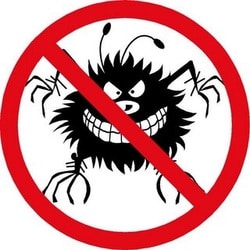

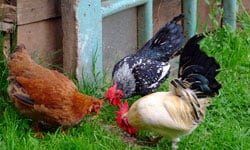
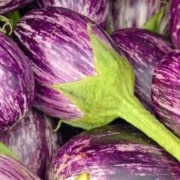 2019 Terroir Seeds | Underwood Gardens
2019 Terroir Seeds | Underwood Gardens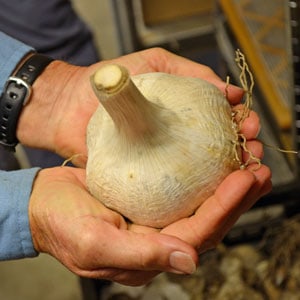
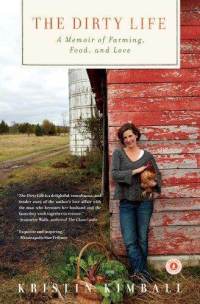

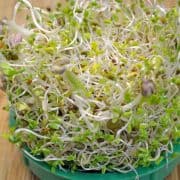

You say this works with all bugs, but grasshoppers seem to defy all the non toxic ways I have tried. Have you noticed whether this works on hoppers for you? I am at my wits end with hoppers and short of letting the chickens in the garden, I’m about ready to scream.
How much water should one start with for your bug spray?
Sorry about that, Linda! I corrected it. It should be a dilution of anywhere from a quart of water for really tenacious bugs to a gallon for milder infestations.
Carolyn, I’ve seen several farmers in Nebraska use a milk solution to drive away soft bodied insects. They use 3-5 gallons per acre. For a home gardener, a 20% milk solution (2 cups of milk to 8 cups of water) foliar sprayed every couple of days works well for some gardeners. Whole milk works best, but any milk will do. The sugars in the milk act as a pesticide for soft bodied insects. Otherwise, try the Squash Bug recipe for its smothering effects.
I see it’s an old post, but I thought I would reply to Carolyn anyhow…
I live in the Northeast and have not had any problems with grasshoppers, I have read about people using “kaolin clay” or “Surround WP” to control grasshoppers. It is an organic item that coats the leaves with a white film and confuses the grasshoppers.
Thanks for sharing your experiences, Chris!
Would love to know how to make the garlic essential oil mentioned as a footnote in the Garden Bug Solution. It would be so much easier to add 5 or 10 drops of the oil than to have to crush garlic bulbs every day since it needs to be made fresh each time.
Thank you for this article. I’ve stopped planting Zuchinni due to squash bug problems and this year I planted Tromboncino squash as I read they are not bothered by squash bugs. So far so good. By this time in July squash bugs are usually much in evidence.
Diana, garlic essential oil is distilled from the crushed garlic bulbs in much the same way any essential oil is distilled. You can make it if you have a distillation setup and the knowledge of how to distill the oils, which very few people do. It is much easier to buy the oil at your local health foods store or apothecary. You can also look online at some of the herbal supply stores.
great information!
Thanks Dennis! Please let us know how it works for you this year.